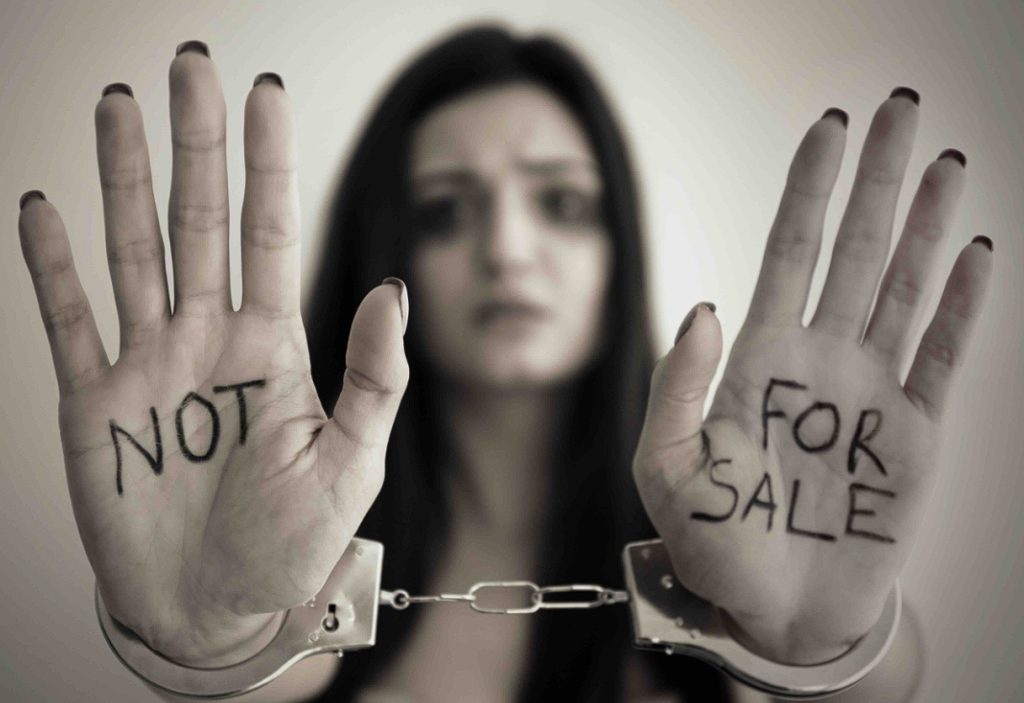What is Human Trafficking?
Is it smuggling? Is Human Trafficking a crime that must have travel across state or national borders? Who are the victims? Who is at risk of being a victim? How do I learn more?
Human Trafficking, also known as trafficking in persons, is a modern-day form of slavery. It is a crime under federal and international law. It is also a crime in the majority of the United States. Human Trafficking is defined in the Trafficking Protocol as “the recruitment, transport, transfer, harboring or receipt of a person by such means as threat or use of force or other forms of coercion, of abduction, of fraud or deception for the purpose of exploitation.”
The definition of trafficking consists of three core elements:
1) The action of trafficking, which means the recruitment, transportation, transfer, harboring or receipt of persons
2) The means of trafficking, which includes threat of or use of force, deception, coercion, abuse of power or position of vulnerability
3) The purpose of trafficking, which is always exploitation. In the words of the Trafficking Protocol, article 3 “exploitation shall include, at a minimum, the exploitation of the prostitution of others or other forms of sexual exploitation, forced labor or services, slavery or practices similar to slavery, servitude or the removal of organs.”
Victims are lured into becoming a Human Trafficker by one or more of these:
- Violence
- Manipulation
- False promises of well-paying jobs
- Romantic relationships
- Sexportation
Why Does Trafficking Exist?

Like drugs and arms trafficking, human trafficking is a market-driven criminal industry that is based on the principles of supply and demand. Many factors make children and adults vulnerable to human trafficking. However, human trafficking does not exist solely because many people who are vulnerable to exploitation. Instead, human trafficking is fueled by a demand for cheap labor or services, or for commercial sex acts. Human traffickers are those who victimize others in their desire to profit from the existing demand. To ultimately solve the problem of human trafficking, it is essential to address these demand-driven factors, as well as to alter the overall market incentives of high-profit and low-risk that traffickers currently exploit.
Why does demand thrive?
Labor trafficking and sex trafficking of U.S. citizens and foreign nationals persist and thrive for a number of reasons, including:
Low Risk: When the community is unaware of this issue, when government and community institutions are not trained to respond, when there are ineffective or dormant laws to address the crime, when safety nets for victims do not exist, and when law enforcement does not investigate and prosecute the crime, human traffickers perceive little risk or deterrence to affect their criminal operations.
High Profits: When individuals are willing to buy commercial sex, they create a market and make it profitable for traffickers to sexually exploit children and adults.
Left unchecked, human trafficking will continue to flourish in environments where traffickers can reap substantial monetary gains with relatively low risk of getting caught.
Demand For Labor Trafficking: What You Need To Know
Human trafficking victims make an alarmingly high number of consumer goods and food products that are both imported to the United States and produced domestically. More often than we realize, somewhere in the supply chain of the products we buy, elements of exploitative child labor or forced labor may be present. As economies around the world integrate, it has become faster and easier for goods produced with forced labor to enter the global market. In the U.S., labor traffickers exploit and enslave both foreign nationals (some of whom enter the U.S. legally) and U.S. citizens.
Demand For Sex Trafficking: What You Need To Know
Individuals who buy commercial sex acts create the demand for sex trafficking. Many sex buyers may be unaware, ill-informed, or in direct denial of the abusive realities of sex trafficking situations as they exist within the broader sex trade. When sex trafficking is present, victims are often subjected to violence, threats, controlling behaviors, false promises, lies, and manipulation perpetrated by the traffickers/pimps. Popular media, including certain books, movies, television shows, and music, sometimes glamorize and romanticize the commercial sex industry without properly acknowledging the presence of sex trafficking. This glamorization then fuels the demand for paying someone else to have sex with them. Additionally, it is common that victims of trafficking will not discuss their situation with customers or ask for help because they are trained by their traffickers to lie and keep up the act. As a result, “johns” may not fully realize the truth behind the facade, or the pain behind the smile. In places and communities where there is a demand to buy sex, sex traffickers directly respond to the demand by seeking to offer a “product” to be sold for profit. To sex traffickers, the “product” they sell are the women and children they control.
Risk Signs
There are warning signs that a child could be at risk for human trafficking. It is up to you to recognize these signs and take action.
- Declining Grades
- Depression
- Unusual temper
- Smoking, drug, or alcohol use
- Bullying – giving and receiving
- Physical, sexual, or emotional abuse
- Family abuse/neglect, unclean, hungry
- Bad behavior, including illegal activity
- Running with the “Wrong Crowd”
- Too much access to unmonitored social media
- Secret friend, older boy / girl friends
- Homeless, runaway, throwaway
Victim Signs
Risk signs were not recognized or ignored. Now a child is a victim. Any one or a few of these signs by themselves may not necessarily indicate a child is a victim, but you must take action to be sure.
- Telling lies, secrets
- Secret cellphone
- Frequent school absences
- Secret friends
- Drug and alcohol use
- Much older boy/girl friend
- Excessive cash
- Fearful. submissive, nervous, won’t talk
- New expensive clothes
- Injuries, signs of abuse
- Lying about age, fake ID
- Branding, jewelry, tattoos
- Inappropriate social media
©Copyright by www.picnbooks.com
Signs of Human Trafficking
Young girls are forced to sell sex by knocking on truckers’ doors at truck stops. Are you or someone you know being trafficked? Is human trafficking happening in your community? Is the situation you may have encountered actually human trafficking?
If you see any of these red flags, contact the National Human Trafficking Resource Center hotline at 1-888-373-7888 or text to BeFree (233733) for specialized victim services referrals or to report the situation. This list is not exhaustive and represents only a selection of possible indicators. Also, the red flags in this list may not be present in all trafficking cases and are not cumulative.
Potential red flags and indicators of human trafficking:
Addiction Support
Are you a male or female addicted to pornography, or do you have a family member addicted, and are looking to free them from this addiction? The United States Conference of Catholic Bishops can provide help.

Not sure if you are addicted to pornography? Take this anonymous quiz to determine if you are.
Additional Support Organizations
Here are some Catholic Ministries that assist individuals seeking liberation from pornography habits or sex addiction:
Covenant Eyes for Men and Women – www.covenanteyes.com
Arise by Covenant Eyes for Women – www.covenanteyes.com/arise/
Integrity Restored for Men / Women – www.IntegrityRestored.com
Integrity Bloom for Women – www.bloomforcatholicwomen.com/
Magdala for Women – www.magdalaministries.org
Road to Purity for Men / Women – Free Online Course – www.roadtopurity.com
Strive 21 Day Detox for Men (English or Spanish) Free Online Course – www.strive21.com
Downloadable Resources
Task Force Presentation Handout – Click Here
Task Force Flyer – Click Here
Task Force Prayer Against Trafficking & Pornography – Click Here (En Español: Haga Clic Aquí)
Task Force Presentation Critique – Click Here
Task Force Social Media Report – Click Here
Covenant Eyes Pornography Facts for Men – Click Here
Covenant Eyes Pornography Facts for Women – Click Here
Sextortion Report – Click Here
